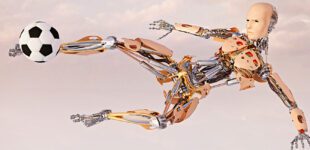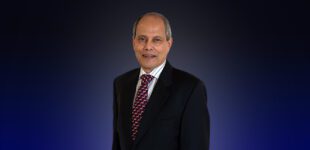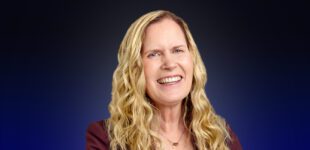June 20, 2019
June 23 is International Women in Engineering Day, and we’re celebrating by chatting with Ella Atkins, IEEE Senior member and Professor of Aerospace Engineering at the University of Michigan, and Paige Kassalen, IEEE Graduate Student Member and Future of Mobility Market Analyst at Covestro.
While women have made massive contributions to the engineering community for decades now, International Women in Engineering Day is an opportunity to recognize their leadership in STEM-related fields.
We asked Atkins and Kassalenabout their decision to become engineers, and what the future holds for women in STEM.
How did you get involved in STEM and when did you know you wanted to become an engineer?
Atkins:
I remember being a very young child when I watched the first moon walk on my family’s black and white TV – I was excited, and even though I grew up in an area where academics weren’t prioritized, my family used this as one of many opportunities to encourage me to develop my mind and to pursue my dreams.
I was fortunate enough to be able to attend MIT, where I had an opportunity to study aeronautics and astronautics as both an undergraduate and graduate student. By this point, I was, as you can imagine, fully committed to being an active, accomplished member of the STEM community.
Kassalen: I’ve always loved to solve problems on my own – as a child, I remember enjoying the challenge of assembling things without using the directions. It made me feel so powerful, capable and independent.
When I was in high school, I had a chance to further my interest in STEM by taking classes in woodshop, applied engineering and computer aided design.
By the time college rolled around, I was fully committed to pursuing a career in STEM. I studied electrical engineering at Virginia Tech, which was a phenomenal experience for me both in and out of the classroom, as I had three STEM-related internships during my time at school.
How did you learn to take risks and pursue your dreams in STEM?
Atkins:
Though I grew up in rural America, my family encouraged me to develop my mind, to pursue my dreams. I didn’t bother to worry about how gender would impact my career because I was always told I could achieve whatever I wanted academically if I worked hard, and I learned pretty quickly. I therefore jumped right into engineering with no fear because I wanted to build cool toys that fly. I still build and fly cool toys today.
Kassalen:
When I was working with Solar Impulse 2, the world’s first airplane to fly around the world only using the powers of the sun, the limits on what I thought I could accomplish became less and less. Then, when the plane landed in Abu Dhabi in the United Arab Emirates and completed a journey that no one thought was possible, all of the boundaries of what I thought I could accomplish were shattered. I was standing on an airport runway in a country I didn’t think I’d have the chance to visit and ran to stabilize the wing of a world record setting solar powered airplane. That moment inspired me to take the message of innovation and clean energy further and to keep challenging myself to live by that pioneering spirit.
I don’t think enough women have these amazing opportunities to shatter the boundaries they set, so that is why it is important for women in STEM to share their stories and be real about their challenges.
What do you think the future holds for women in STEM?
Atkins: I’m excited for what the future holds for women in STEM, as we’ve historically been quite underrepresented in most related fields.
Hearing from other women might help encourage young women and girls to reach for goals they might have been told were beyond their grasp; events such as these provide a clear message that women are highly capable of “getting the job done,” so to speak.
I look forward to a day where we, as a society, will not pre-judge someone based on their gender; I look forward to a time where we, in the STEM community, collaborate openly, freely and creatively, without stifling input based on preconceived notions of value.
Women have been making great strides in STEM for decades now, and I’m excited to see this trend continue.
Kassalen: When I was in high school, less than 10 years ago, there weren’t STEM-related clubs and initiatives in place; there wasn’t a community for women interested in pursuing careers in STEM-related fields, so there was a lack of both opportunity and support.
I’m excited to have seen that change over the past decade, as a lack of either of the aforementioned can be crippling to young women and girls considering a career in STEM.
The future of women in STEM is bright, to say the least.




 Meaningful Momentum or Running in Place?
Meaningful Momentum or Running in Place? AI Through Our Ages
AI Through Our Ages Liquid Infrastructure: Our Planet's Most Precious Resource
Liquid Infrastructure: Our Planet's Most Precious Resource The Impact of Technology in 2025
The Impact of Technology in 2025 Quantum and AI: Safeguards or Threats to Cybersecurity?
Quantum and AI: Safeguards or Threats to Cybersecurity? Why AI Can't Live Without Us
Why AI Can't Live Without Us Bits, Bytes, Buildings and Bridges: Digital-Driven Infrastructure
Bits, Bytes, Buildings and Bridges: Digital-Driven Infrastructure Impact of Technology in 2024
Impact of Technology in 2024 Emerging AI Cybersecurity Challenges and Solutions
Emerging AI Cybersecurity Challenges and Solutions The Skies are Unlimited
The Skies are Unlimited Smart Cities 2030: How Tech is Reshaping Urbanscapes
Smart Cities 2030: How Tech is Reshaping Urbanscapes Impact of Technology 2023
Impact of Technology 2023 Cybersecurity for Life-Changing Innovations
Cybersecurity for Life-Changing Innovations Smarter Wearables Healthier Life
Smarter Wearables Healthier Life Infrastructure In Motion
Infrastructure In Motion The Impact of Tech in 2022 and Beyond
The Impact of Tech in 2022 and Beyond Cybersecurity, Technology and Protecting Our World
Cybersecurity, Technology and Protecting Our World How Technology Helps us Understand Our Health and Wellness
How Technology Helps us Understand Our Health and Wellness The Resilience of Humanity
The Resilience of Humanity Harnessing and Sustaining our Natural Resources
Harnessing and Sustaining our Natural Resources Creating Healthy Spaces Through Technology
Creating Healthy Spaces Through Technology Exceptional Infrastructure Challenges, Technology and Humanity
Exceptional Infrastructure Challenges, Technology and Humanity The Global Impact of IEEE's 802 Standards
The Global Impact of IEEE's 802 Standards Scenes of our Cyber Lives: The Security Threats and Technology Solutions Protecting Us
Scenes of our Cyber Lives: The Security Threats and Technology Solutions Protecting Us How Millennial Parents are Embracing Health and Wellness Technologies for Their Generation Alpha Kids
How Millennial Parents are Embracing Health and Wellness Technologies for Their Generation Alpha Kids Space Exploration, Technology and Our Lives
Space Exploration, Technology and Our Lives Global Innovation and the Environment
Global Innovation and the Environment How Technology, Privacy and Security are Changing Each Other (And Us)
How Technology, Privacy and Security are Changing Each Other (And Us) Find us in booth 31506, LVCC South Hall 3 and experience the Technology Moon Walk
Find us in booth 31506, LVCC South Hall 3 and experience the Technology Moon Walk Virtual and Mixed Reality
Virtual and Mixed Reality How Robots are Improving our Health
How Robots are Improving our Health IEEE Experts and the Robots They are Teaching
IEEE Experts and the Robots They are Teaching See how millennial parents around the world see AI impacting the lives of their tech-infused offspring
See how millennial parents around the world see AI impacting the lives of their tech-infused offspring Take the journey from farm to table and learn how IoT will help us reach the rising demand for food production
Take the journey from farm to table and learn how IoT will help us reach the rising demand for food production Watch technical experts discuss the latest cyber threats
Watch technical experts discuss the latest cyber threats Explore how researchers, teachers, explorers, healthcare and medical professionals use immersive technologies
Explore how researchers, teachers, explorers, healthcare and medical professionals use immersive technologies Follow the timeline to see how Generation AI will be impacted by technology
Follow the timeline to see how Generation AI will be impacted by technology Learn how your IoT data can be used by experiencing a day in a connected life
Learn how your IoT data can be used by experiencing a day in a connected life Listen to technical experts discuss the biggest security threats today
Listen to technical experts discuss the biggest security threats today See how tech has influenced and evolved with the Games
See how tech has influenced and evolved with the Games Enter our virtual home to explore the IoT (Internet of Things) technologies
Enter our virtual home to explore the IoT (Internet of Things) technologies Explore an interactive map showcasing exciting innovations in robotics
Explore an interactive map showcasing exciting innovations in robotics Interactively explore A.I. in recent Hollywood movies
Interactively explore A.I. in recent Hollywood movies Get immersed in technologies that will improve patients' lives
Get immersed in technologies that will improve patients' lives